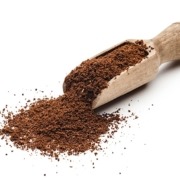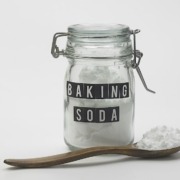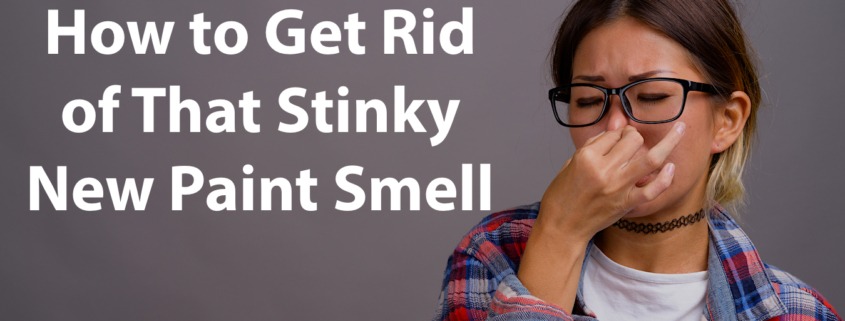How to Get Rid of That Paint Smell – 8 Tips to Remove & Prevent Paint Odors & Fumes in Your House
Nothing makes a house look better than a fresh coat of paint applied well. There are a lot of different kinds of paint for different kinds of painting jobs – oil-based, acrylic, vinyl, epoxy, and more. But no matter what kind of paint you use and no matter how it’s professionally applied, all paints can have unpleasant odors and even downright stinky smells. This is especially true when you are painting indoors. And no one wants their bedroom or dining room to smell like paint.
Your newly-painted living room or freshly coated bathroom will have a bit of a paint odor until it’s completely dry. That can take several days in some cases. But removing the paint smell can be important – especially if you or your family are sensitive to paint odors or if the paint fumes make you feel woozy, nauseous, or dizzy. Fortunately, there are things you can do to make the paint smell go away faster or even prevent them from being noticed in the first place.
Getting Rid of New Paint Smell Now With Common Household Items
As paint dries or cures, it releases Volatile Organic Compounds (VOCs) and water into the air. VOCs are basically the liquids and chemical compounds that keep paint liquid until we want it to dry. If your room has already been painted and smells like paint, here are some simple, practical, and cost-effective things you can do now to make that paint smell go away by absorbing, masking, or removing VOCs from the air in your freshly painted room.
And the best part is that these paint smell solutions are cheap and easy to do with common household items that you probably have in your pantry.
The Lemon Water Method Masks and Removes Paint Odors

Fill a deep pan or bucket with water. Add about two tablespoons of salt. Then carefully cut two whole lemons into ¼-inch thick slices and spread them out to float in the water. Leave the pan or bucket in the newly painted room as long as needed.
Lemons have a lot of citric acid and essential oils that release naturally into the air and salt water naturally absorbs air-born particles. So, the lemony scent masks the chemical smell of paint while the salt water removes some paint odors from the air at the same time.
The Coffee Grounds Method Masks and Absorbs Paint Smells

The fact that fresh coffee grounds hide chemical odors and smells has been the plot of a bunch of cop TV shows and movies. And it’s actually true!
In this
The Baking Soda Method Absorbs Stinky Paint Fumes

People have been placing an open box of baking soda in their refrigerators to remove bad odors for generations. But most people don’t know that it also works great at removing paint odors from rooms as well.
Baking Soda is sodium bicarbonate. It’s really just a bunch of tiny, compressed crystals with lots of jagged edges that bond easily with other chemicals. And that’s why it works so well as an odor remover. When a chemical in the air – like paint fumes – touches the baking soda, it gets stuck there.
Just like with the coffee grounds method, the more surface area the better. Spread a layer of baking soda out on a cookie sheet about 1/8-inch thick. Leave the cookie sheet in the newly painted room over-night and then throw it away. You will find that the paint smell has been reduced a lot. Repeat as needed.
The Charcoal Method Absorbs Nasty Paint Smells & Aromas

Charcoal has been used to purify air and liquids for a long time. Common air filters are filled with activated charcoal. Primary water filters are too. Heck, Jack Daniels is famous for filtering their Tennessee Bourbon Whiskey through charcoal to remove smells and edgy flavors before aging. You can use charcoal to absorb unpleasant paint odors from your room as well.
Importantly, don’t use “self-lighting” or “self-starting” charcoal to eliminate paint odors. Those products are great for a quick family Bar-B-Q, but they are filled with other chemicals that make them catch fire quickly. Not only would using those products be a fire hazard, they would actually put the smell of flammable liquids in your room!
Again, lots of surface area is key. So, the smaller the pieces the better. Spread the charcoal pieces out on a cookie sheet and leave in the painted room as long as needed to remove the unpleasant paint odor.
The Onion Method Absorbs Paint Odors, But ….

It’s well known that onions will absorb aromas and flavors from the air around them. But, as you might expect, if you use the onion method your room will have a subtle onion smell for a while afterward.
Carefully cut two onions into ¼-inch thick slices and lay-out in a single layer on a large cookie sheet. Leave this pan in the painted room overnight and you will discover the paint smell is almost completely gone in the morning. But the room will also have a residual onion aroma for a few hours afterward. And we don’t have to remind you to throw the used onions away afterward, right?
Nothing Beats Ventilation to Eliminate & Prevent Paint Smells
Proper ventilation does not mask or remove paint fumes, but it keeps them from collecting in the room so that they don’t become noticeable or harmful. This method to eliminate paint smell is most effective when the room is properly ventilated during the painting process and while the paint is drying. Proper ventilation can prevent foul paint smells from occurring in the first place. But this is not always possible for rooms without windows or fans and in certain weather conditions.
Low-Odor & Low-VOC Paints Prevent Paint Fume Odors
Finally, there are a bunch of paint products on the market advertised as “low odor” or “low VOC.” And it’s true that these paints have lower amounts of painting fumes and paint odors than other kinds of paint. But there are always trade-offs. So low-odor paints may not be right for every situation.
If you need help choosing the right paint for your project, give us a call and we’ll be happy to help you choose the right one for you. Let us know if you have any questions.







